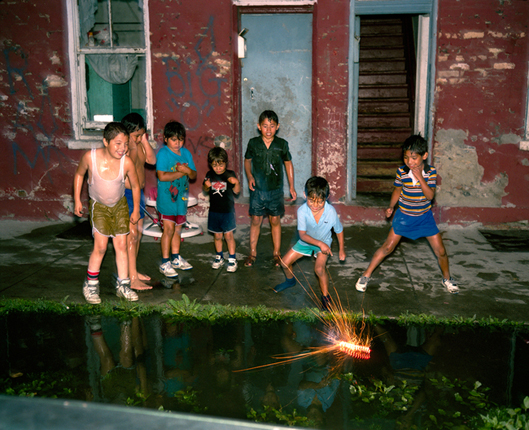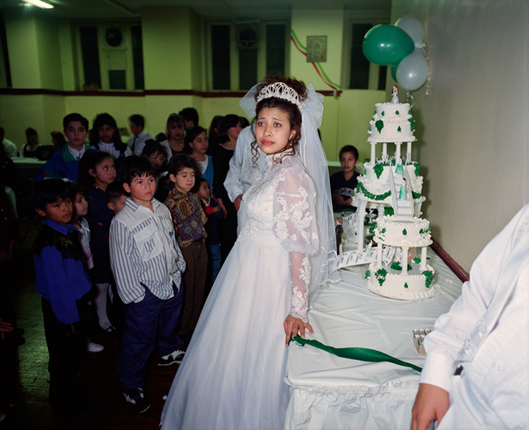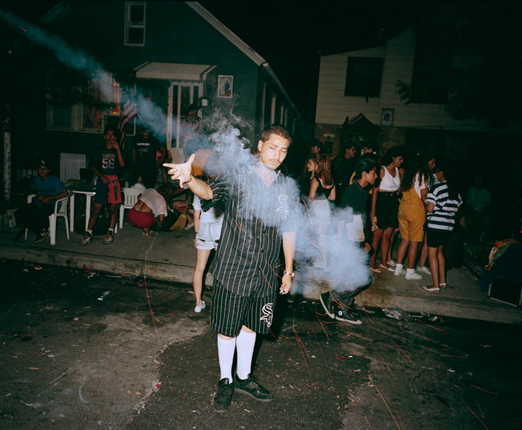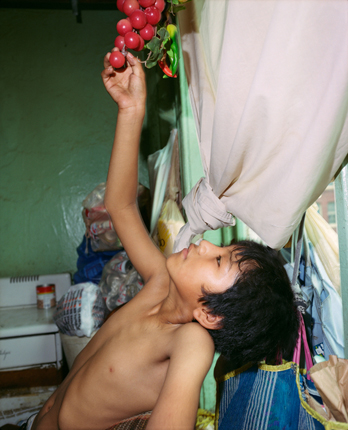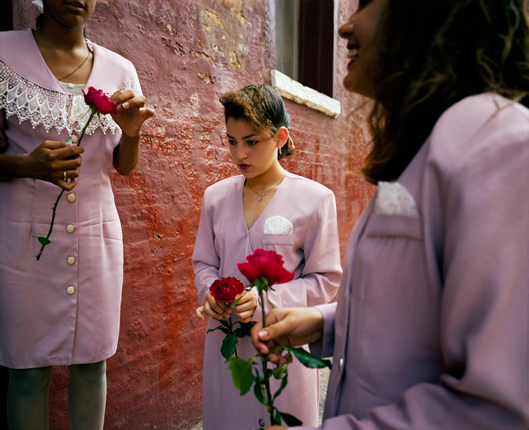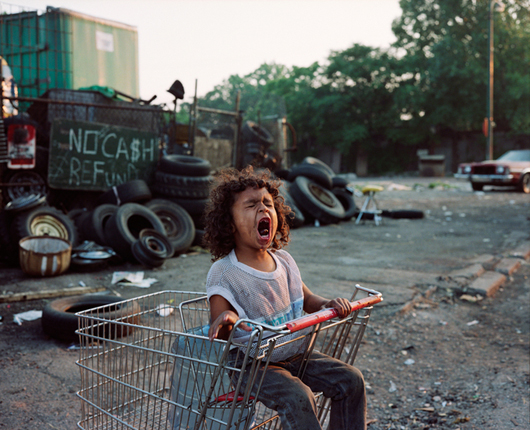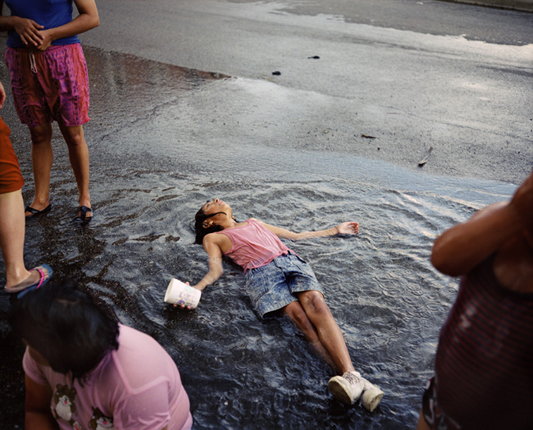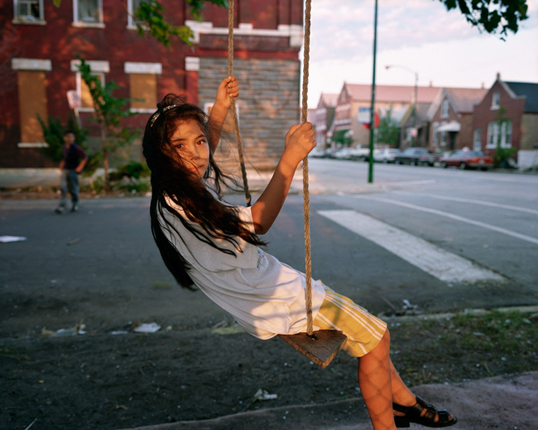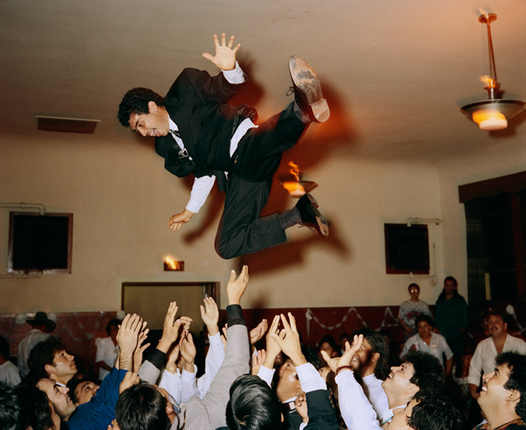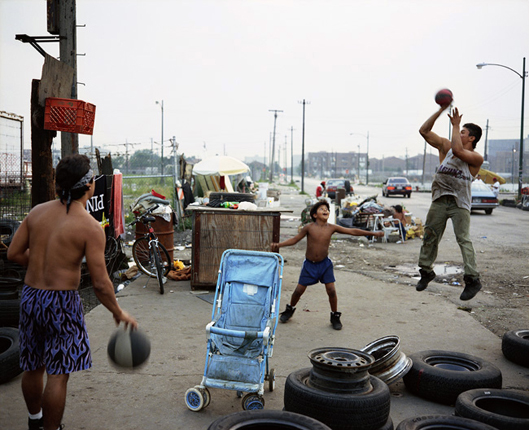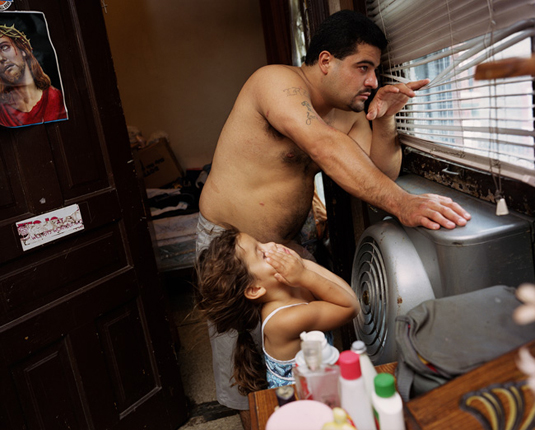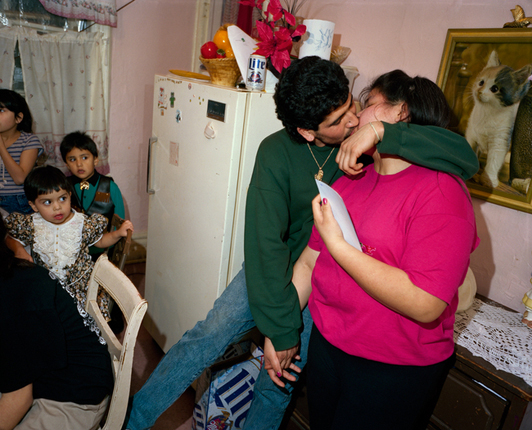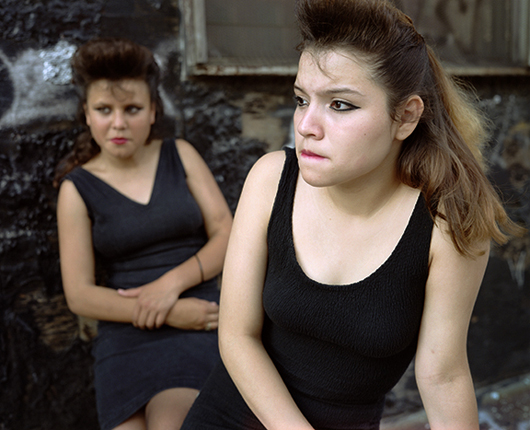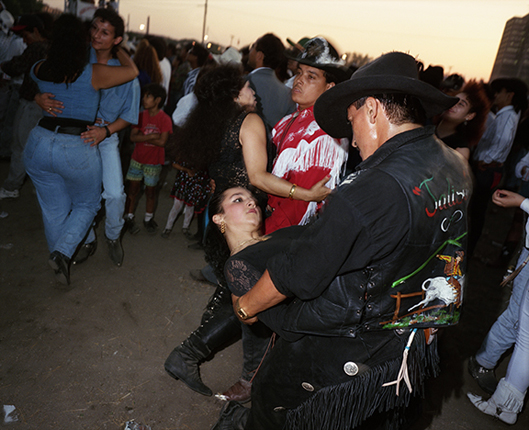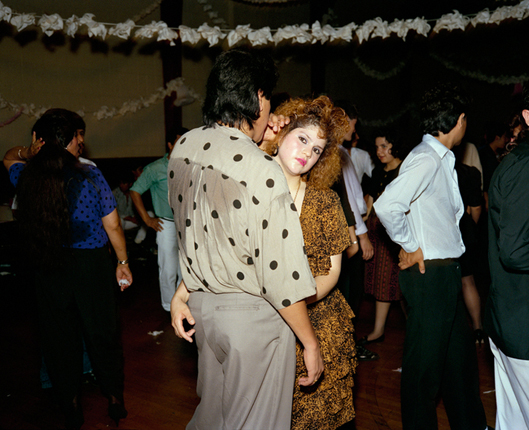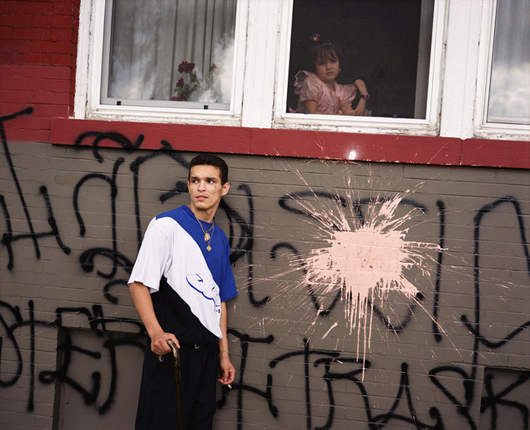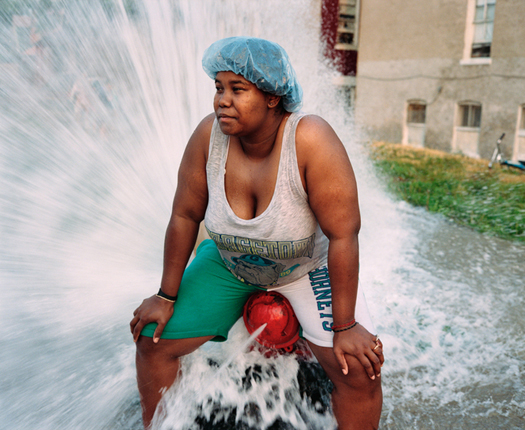Exerpts from the book, “Barrio”
Pilsen First
The first time I drove through Pilsen I had no idea, of course, that I would return for the next fifteen years. But, as with anything truly important, my first impressions are as clear as day. I was simply driving around Chicago, cruising for images, and decided to swing south through this neighborhood because I knew a friend who lived near there. I knew that it was Mexican and I had heard that it was really poor and kind of rough. Back then, that’s all I needed. As I crossed Halsted to go down 18th Street, I clearly remember feeling like I had passed into something particular. I couldn’t say then what that was but I knew I had definitely left one world for another.
I had been to a lot of different neighborhoods in Chicago, but this one had an aura to it. It was dark and colorful, full of texture, energy. I was peering through the window of my car like I was watching something intense on TV; old buildings of brick and sandstone with winking neon lights that announced Bennys Taqueria or Titos Hacienda.
After a while I began dipping into some of the side streets. I was on 19th and Carpenter. Across an empty lot from where a house had been torn down, I saw a little girl emerging from the side door near the back of a long, narrow turquoise house, poised on the edge of the back stoop, pausing in the space between being inside and out. It was late in the afternoon. The light was soft and, next to all the cool tones of the house, she stood out like some kind of latina light bulb.
I remember the tug of war between wanting to make this picture, the first of the afternoon, and being unsure if it was safe to leave the security of the car. I pulled the car over, weighed these conflicting impulses, looked at this girl 150 yards away, thought nothing risked, nothing gained, and opened the door.
Though I couldn’t see anyone else around, I felt that I was being observed from every window and crevice that I couldn’t see back into. Even the bricks seemed to have eyes. To make matters worse, the light was low enough that I needed a tripod to make the picture. I was sure that I must have looked like a city surveyor with a huge bulls eye painted on my back. After a few frames, the girl noticed me and went inside. I returned to the safety of the car and drove away. It was a stupid picture with way too much space. I had stood in a place that had been determined by caution instead of desire. I thought about that every time I passed by that corner.
Why Pilsen?
I’ve been asked this so many times and I‘ve answered this question in as many different ways. When I’m asked, I often feel that it is shorter form of something longer like: what’s a white guy like you doing in a poor Mexican neighborhood like this? The tone varies too from simple incomprehension to what business does a white…
The people who ask this of me or of anyone interested in the world, trying to understand it, and perhaps photograph it have boundries in mind that are completely artificial. They are constructs of their own thinking which sees small differnces and weight them so much more heavily than all the similarities that we all have in common. I guess I’ve always been interested in crossing these lines, these imagined barriers. Even when I was a landscape photographer, I trespassed with impunity because I was deeply suspicious of this notion of pivate property, another completely artificail boundry. If it’s the camera that allows one to do this, to be with Mexicans today and who knows what tomorrow, then hallelujah.
But still the question “why Pilsen?” versus anywhere else is a good one for me to consider. I think the nature of my attraction has been the same from the first day I drove down 18th Street. I’ve simply been trying to awkwardly squeeze that feeling into different shaped explanations. At first it was a kind of predictable documentary answer: urban neighborhood, Latino culture, etc.. Then it became a little more personal as I saw the hood as a kind of metaphor for immigration itself and a contemporary expression of what my father’s neighborhood might have been like in Boston at the turn of the century. After my gang experiences I became disenchanted with the whole documentary approach to life. I was also getting fed up with the so-called political correctness implicit in the question. So my answer to that question became more belligerent: I was only doing this for myself, I don’t care about Mexican culture, which photographically I don’t, and would you ask this of a Latino photographer photographing white suburbia? Man, I would get so furious over this “photographing the other” crap. All this from “critics” lording from on high who haven’t a fuckin’ clue about making work. Judge the pictures, (remember the pictures? the things that you can see?) but don’t dare tell me where I can go or what I have a right to be interested in.
Since then my explanation has taken a more romantic turn. It is a kind of visual love affair and, like any love, the reasons are complicated. With any love there are a lot of positive qualities and even some negative. You love (someone, some place, anything) because it makes you a better person. I don’t know about the better person part, but my love for Pilsen has certainly made me a better photographer. I’ve thought of lots of reasons to explain my outside interest in a Mexican neighborhood, but it all boils down to a kind of visceral attraction. And there’s only so much analysis that can take.
In the end, I think it is interesting simply because I am so interested. People should be more interested in the world outside their own lives anyway and simply go out and have their own experiences. Its amazing what one can learn when they are young and willing to get into trouble. (Garrison Kiellor) or as I would say: willing to be a stranger.
Ultimately, part of me distrusts all of these explanations. If the pictures don’t justify my time in Pilsen, then nothing I say will.

